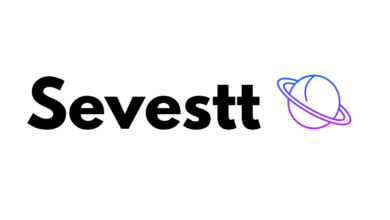Hitlmila: Unraveling the Mystery Behind the Viral Phenomenon

Introduction
The internet constantly births new trends, memes, and cryptic references that capture global attention—some fleeting, others evolving into cultural staples. Hitlmila is one such enigma that has recently surfaced across social media, sparking curiosity, debates, and countless theories. Is it a code word, an inside joke, or the next big digital movement? This article dives deep into the origins of Hitlmila, its sudden rise to fame, and the possible meanings behind this puzzling term. From viral tweets to underground forums, we explore why this mysterious phrase has taken the online world by storm and what it reveals about modern internet culture.
1. The Origins of Hitlmila: Tracing the First Mentions
Every viral sensation has a starting point, and Hitlmila is no exception. The term first appeared in obscure online communities, possibly as a misspelling, an inside joke among a niche group, or even an ARG (Alternate Reality Game) clue. Early mentions can be traced back to cryptic Reddit threads, Discord chats, and Twitter posts where users engaged in surreal humor or layered wordplay. Some speculate that Hitlmila could be an acronym, a cipher, or a reference to pop culture, while others believe it was entirely random—accidentally gaining traction due to its unusual phonetic appeal. The lack of a clear origin story only fuels its intrigue, making it a blank canvas for collective imagination.
2. The Viral Spread: How Hitlmila Dominated Social Media
Once confined to small circles, Hitlmila exploded into mainstream awareness when influencers and meme accounts began repurposing it out of context. Platforms like TikTok and Instagram Reels amplified its reach, with users creating absurdist content around the term—asking “What is Hitlmila?” or using it as a punchline with no explanation. This deliberate ambiguity played into the internet’s love for surreal humor, where meaning is secondary to the communal experience of confusion. Brands and streamers soon capitalized on the trend, further embedding Hitlmila into digital lexicon. The phrase’s versatility—it could be a joke, a hashtag, or a meme template—ensured its rapid adoption across languages and cultures.
3. Decoding Hitlmila: Theories and Interpretations
Despite its popularity, no definitive meaning for Hitlmila exists. This hasn’t stopped theorists from proposing explanations:
-
Linguistic Play: Some argue it’s a portmanteau or nonsense phrase designed to evoke curiosity, similar to past memes like “Smurf” or “Kek.”
-
Hidden Message: Could it be an anagram? Rearranged letters yield vague results (“Hi, I’m Altil”), but no clear connection.
-
Cultural Reference: A few link it to foreign languages, video game lore, or even a misheard lyric from a song.
-
Psychological Experiment: Conspiracy-minded users suggest it’s a social experiment to study how misinformation spreads virally.
The beauty of Hitlmila lies in its openness to interpretation—a Rorschach test for the digital age.
4. Hitlmila as a Case Study in Internet Anthropology
The lifecycle of Hitlmila mirrors how modern memes evolve: born from randomness, propelled by collective participation, and often devoid of inherent meaning. It highlights the internet’s power to turn absurdity into shared culture, where the act of not understanding becomes the joke itself. Compare it to past phenomena like “The Game” (which you just lost) or “Banana for Scale”—phrases that persist purely due to their recursive, meta-humor. Hitlmila also underscores how platforms reward engagement over substance; the more users interact with the term (searches, replies, memes), the more algorithms push it into visibility.
5. The Future of Hitlmila: Will It Fade or Evolve?
Most viral terms have short lifespans, but exceptions like “Dogecoin” or “Rickrolling” prove some endure by adapting. Hitlmila’s fate depends on whether it’s adopted by subcultures (e.g., gamers, crypto communities) or repurposed creatively (e.g., merchandise, music lyrics). Alternatively, it might vanish overnight, replaced by the next nonsensical trend. Yet, its legacy would remain—a testament to how the internet thrives on collaborative mystery, where the journey to decode a thing matters more than the answer itself.
Conclusion
Hitlmila is more than a word; it’s a mirror reflecting internet culture’s love for chaos, creativity, and connection through shared confusion. Whether a fleeting joke or a lasting meme, its rise exemplifies how digital communities collectively build meaning—or, in this case, the lack thereof. As we await the next viral puzzle, Hitlmila serves as a reminder that sometimes, the fun isn’t in solving the riddle, but in the wild theories and camaraderie spawned along the way.



